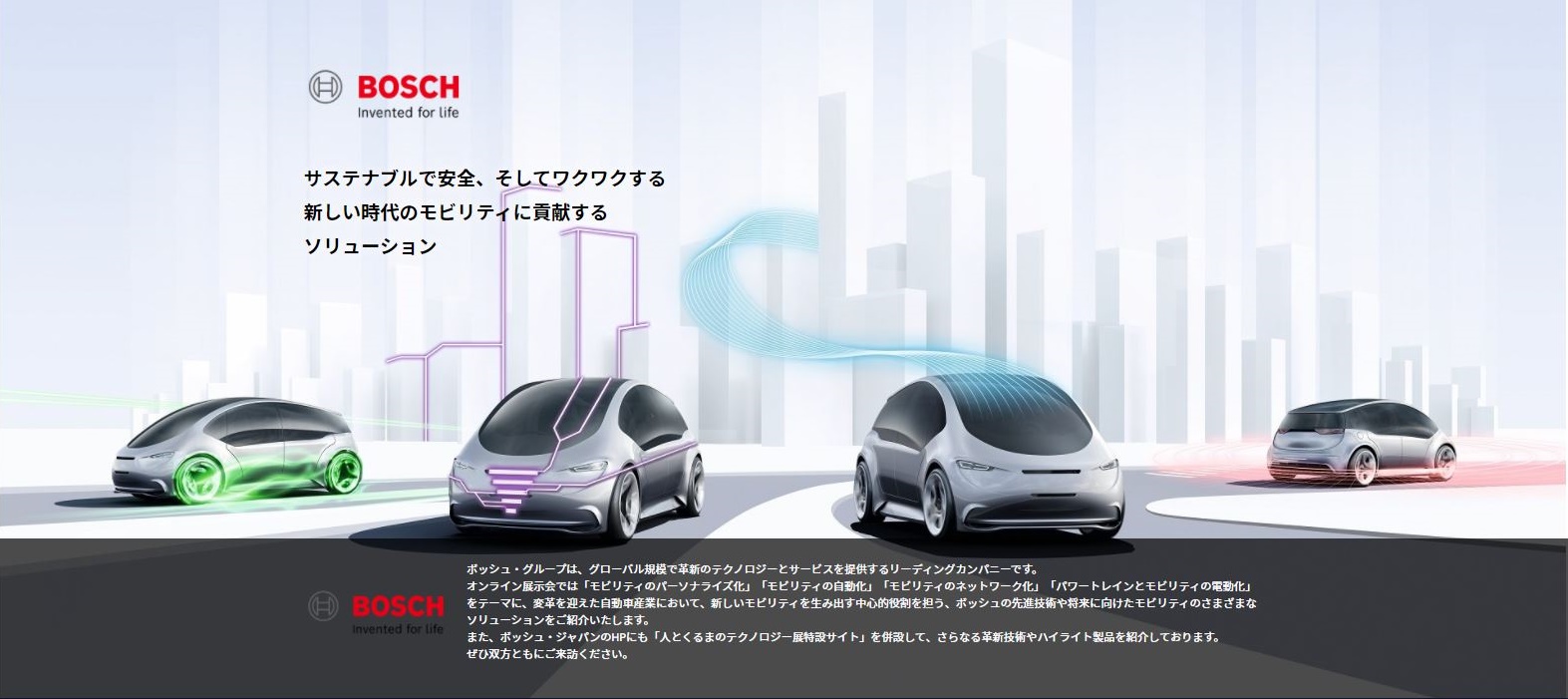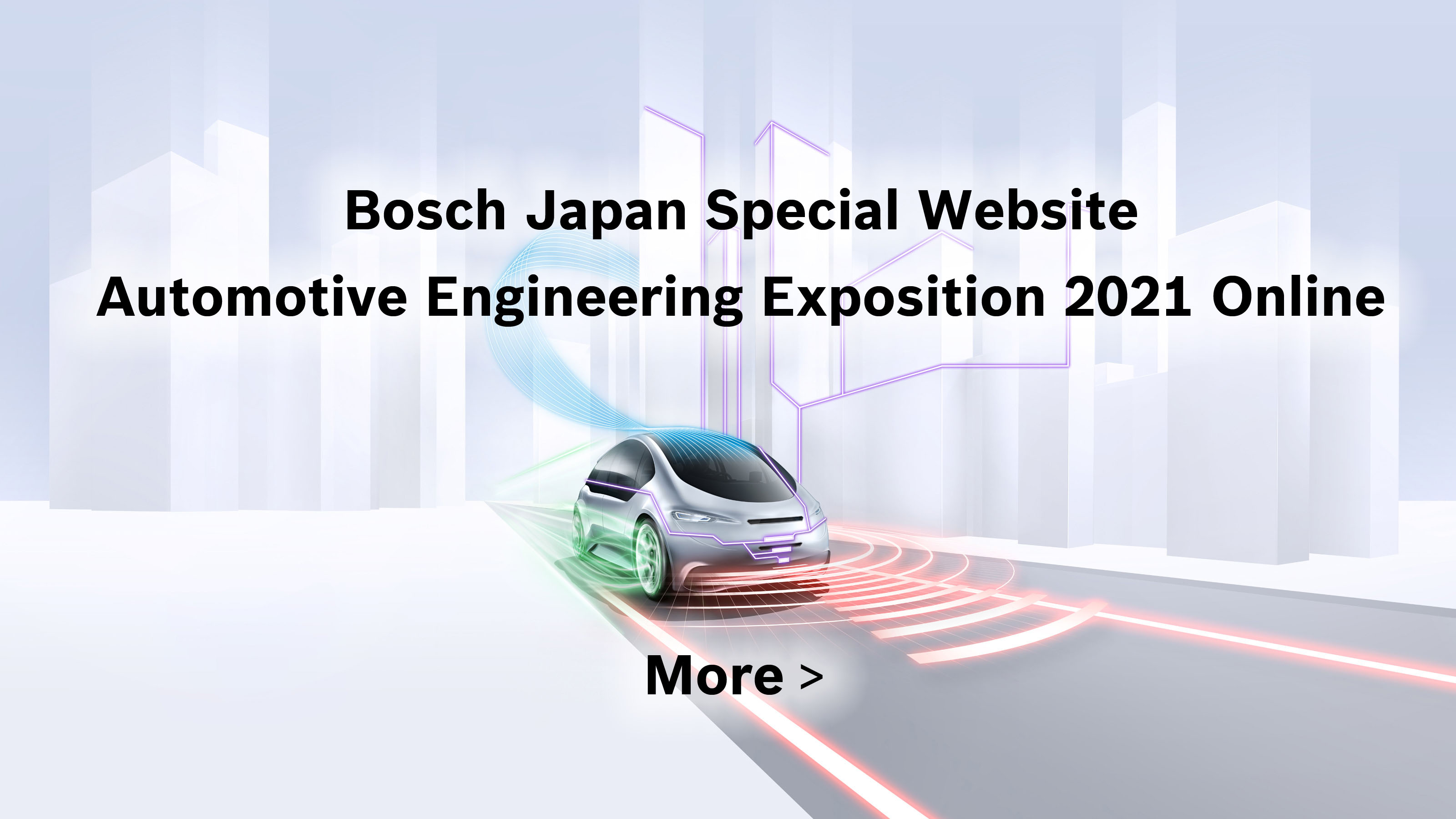Tokyo – Bosch Corporation, the Japanese subsidiary of Robert Bosch GmbH, a leading company providing innovative technologies and services on a global scale, will participate in Automotive Engineering Exposition 2021 Online, to be held from May 26 (Wed) to July 30 (Fri). Bosch will exhibit its wide range of solutions for sustainable, safe and exciting mobility.
Japan premiere: fuel cell power module - the fuel cell system for commercial vehicles
The scalable fuel cell power module is a fuel cell system that generates electricity from hydrogen in vehicles. Its primarily use is for commercial vehicles, especially in long-distance applications. The system comprises a fuel cell stack and the fuel cell submodules, such as those for hydrogen and air, which are required for the stack to operate.
The fuel cell power module combines the fuel cell stack, as well as the subsystems for the hydrogen and air supplies, the cooling circuit, and current supply in one compact module. With its impressive service life, robust design, and performance class, the product is designed to cope with commercial vehicle applications. The system complexity of a module of about 700 parts has been compiled into a solution that is easy to integrate.
Japan premiere: Fuel Cell components (Two types of air valves)
Stack isolation and pressure control valve
Stack isolation and pressure control valves regulate air and pressure on the inlet and outlet in cathode subsystems. In non-operation mode, the valves isolate the inlet and outlet path with extremely low leakage. The valves greatly contribute in the overall fuel cell system power control and system efficiency as well as maximizing stack lifetime.
Humidifier and stack bypass valve
Humidifier and Stack bypass valves both regulate the air flow inside the bypass channels. The humidifier bypass valve is key to ensure the right air humidity in a stack and retain the high level of system efficiency. The stack bypass valve releases air to outlet channel and helps avoid surge of air compressor.
Japan premiere: CVT4EV
The CVT is a stepless automatic transmission which transfers the engine's output power to the driven axle using a pushbelt. It variates the transmission ratio continually without interrupting the power transfer between the engine and the wheels. Bosch started large-scale production of the CVT in 1985.
Using this technology, Bosch is currently developing the CVT4EV, a CVT with pushbelt, designed for electric vehicles, as one of solutions for electrification.
Depending on the specific design, CVT4EV can increase efficiency, provide more torque in traction mode, better acceleration, or a higher maximum speed. Because the transmission adjusts the ratio continuously without loss of traction, the driving ease typical of EVs is not lost. The CVT4EV's variable gear ratio provides the best possible balance of efficiency and performance. The system can freely control the speed and torque of the electric motor. The adoption of CVT makes it possible to flexibly set the driving mode of EVs, making it possible to set up an EV lineup that meets various market needs.
The system controls the CVT's speed ratio to find the electrical powertrain's optimum operating point. Due to the reduced torque and speed requirements, a cheaper and more compact motor can deliver the same or even better performance. Alternatively, the same motor can achieve a greater range. As a result, manufacturers of EVs can find the optimum balance between battery capacity and range.
The CVT4EV is a powertrain suited for a wide variety of applications, from mid-size cars to sports cars to light commercial vehicles with one design. This powertrain solution consists of a CVT4EV module, an inverter, an electric motor, and an axle drive with a ratio adapted to the vehicle. Due to the final reduction ratio and software adaptation, hardware variations allow for common components across different segments and vehicle types.
Japan Premiere: Advanced Driving Module
Electrification and personalized mobility, automated driving and connected services increase the complexity of vehicle development and automobile manufacturers have numerous new challenges. At the same time, new manufacturers are entering the market worldwide with electric mobility, increasingly demanding system solutions instead of individual components.
The scalable concept using pre-integrated modules enables new vehicle concepts to be implemented quickly and helps carmakers to increase their development efficiency. Customers can choose between pre-integrated modules and an all-in-one solution.
Bosch will present Advanced Driving Module, combining individual components such as the eAxle, control unit, braking and steering system, for the first time in Japan along with Rolling Chassis which is the highest level of expansion and shows what maximum integration is possible.
Advanced Driving Module makes interfaces simplified and optimizes communication between the components. This ensures optimum interaction in the electric vehicle, for example regarding vehicle stabilization or recuperation. With the combination of state-of-the-art hardware and software, car manufacturers can increase their development efficiency and bring electric vehicles to market faster.
Note: This solution will be exhibited jointly with Bosch Engineering.
Japan Premiere: LTE65-JP Telemetry System
The LTE 65-JP is a 4G-LTE telemetry system that enables real-time transmission and reception of various data from a vehicle. The data is sent and received through a cloud service (RaceConnect) included in the system, so the system can meet various user needs, such as receiving driving data from racing circuits and test courses in Japan at the pit, office or home. The 4G line used for communication is mainly used for cell phones, so no special equipment or infrastructure is required within the communication area. The LTE65-JP has obtained the Technical Regulations Conformity Certification (GITEKI), which is a Japanese technical certification, and can be used safely and securely together with RaceConnect, which uses encryption technology.
The communication protocol supports Ethernet and Serial, and can be used with Bosch displays, ECUs, and data loggers, as well as with various devices from other manufacturers.
Note: This solution will be exhibited by Bosch Engineering.
List of the technology and services presented at the Automotive Engineering Exposition 2021 Online
Solutions for automated mobility
- Automated driving enabler
- Automated valet parking
- Simulation of Sensor Data / iVESS (by Bosch Group ITK Engineering Japan)
Solutions for electrified mobility
- E/E architecture and Vehicle computer
- EV/HEV Components
- Thermal management for hybrid systems and electric drives
- GCC and V2X Simulator (by Bosch Group ITK Engineering Japan)
Solutions for connected mobility
- Information domain computer
- Battery in the cloud
- Convenience charging
Other solutions
- Vehicle systems engineering (by Bosch Engineering)
- Remote Vehicle Access and Remote Validation (by Bosch Engineering)
- Test Bench and OptiFit (by Bosch Group ITK Engineering Japan)
- CI/CD Toolchain / DevOps (by Bosch Group ITK Engineering Japan)
Contact persons for press inquiries:
Kiyohiko Sumiya
Aiko Furuichi
phone:+81-3-5485-3393

